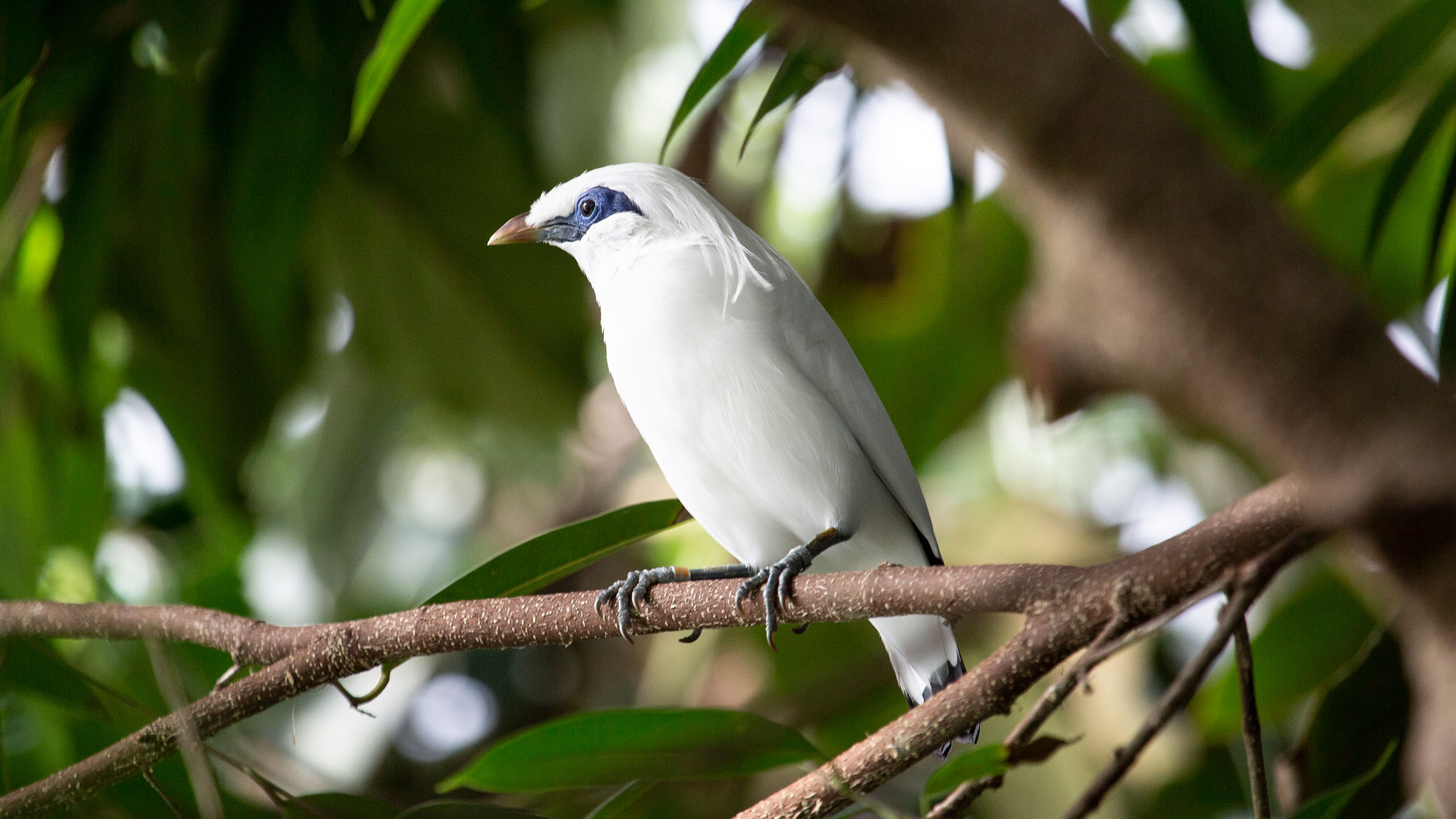
Bali starling
Leucopsar rotschildi
The Bali starling, also known as the Bali myna, is endemic to the island of Bali in Indonesia. Its natural habitats include monsoon forests, wooded savannas, and grasslands. In behavior and vocalization, the Bali myna resembles other starlings, but it is almost entirely white in color.
During the breeding season, which occurs in October and November, male Bali starlings sing eagerly to attract females to nesting sites and to keep rival males away. They usually nest in tree cavities made by other birds, but nests have also been observed in the branches of palm and fig trees.
Conservation
The Bali starling is one of the most endangered bird species in the world. Although the species has been protected since the 1970s, it has come close to extinction several times. The first major low point occurred in 1990, when only 13 individuals remained in the wild. Thanks to intensified conservation efforts and reintroductions, the population began to recover—until another collapse hit in 2001: only six individuals! Wild populations are sustained through reintroductions. Protective measures are still necessary.
Songbirds in Southeast Asia are being threatened by the culturally deep-rooted habit of using birds as captive pets, food and in medication. There are also bird singing competitions for monetary awards.
This species and the individuals living in Korkeasaari Zoo are part of an ex-situ conservation programme by the European Association of Zoos and Aquaria EAZA, known as the EEP.
The species is part of the CITES convention, which regulates the international trade of endangered or threatened animals and plants.
Tropical house Africasia
